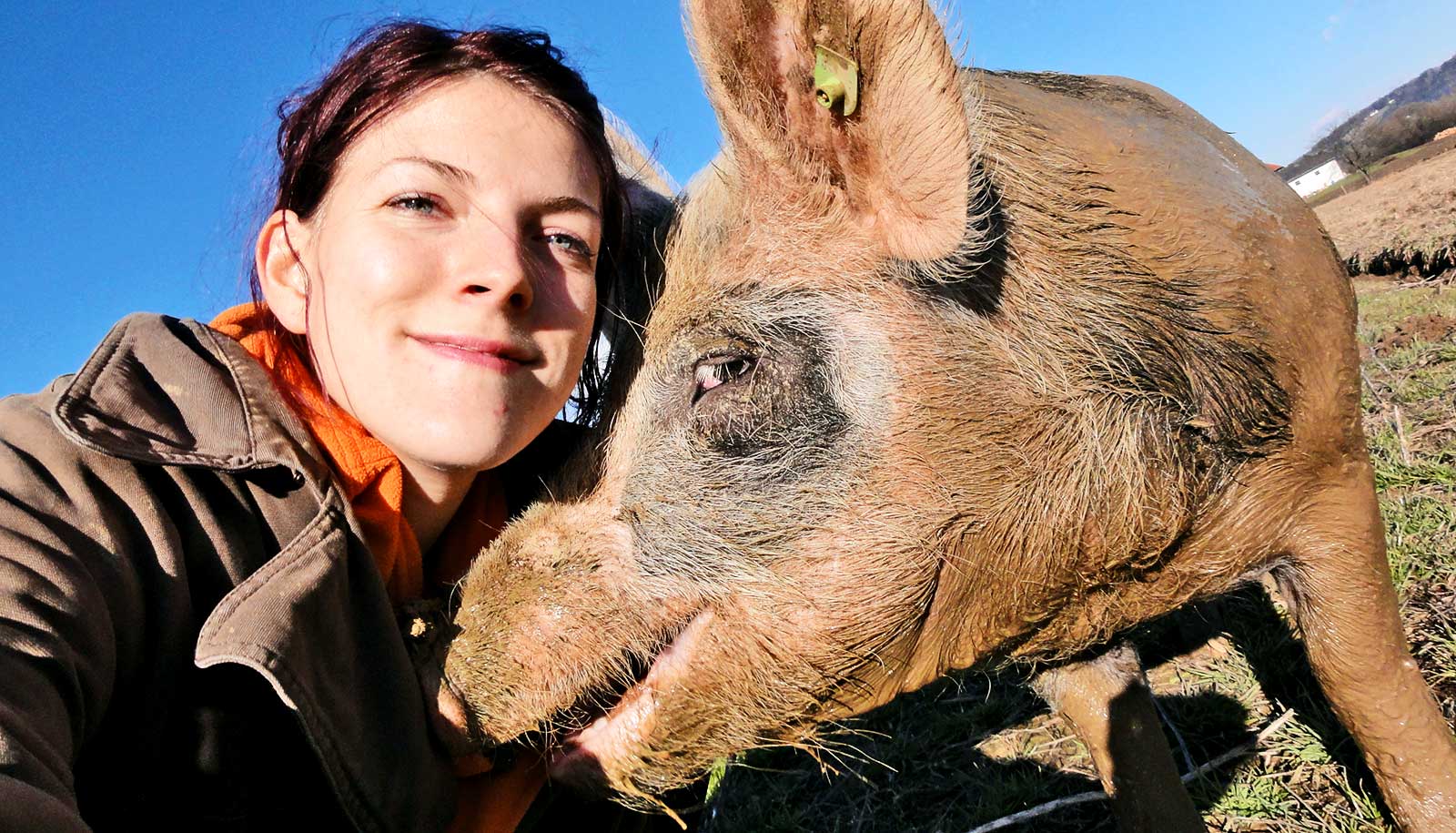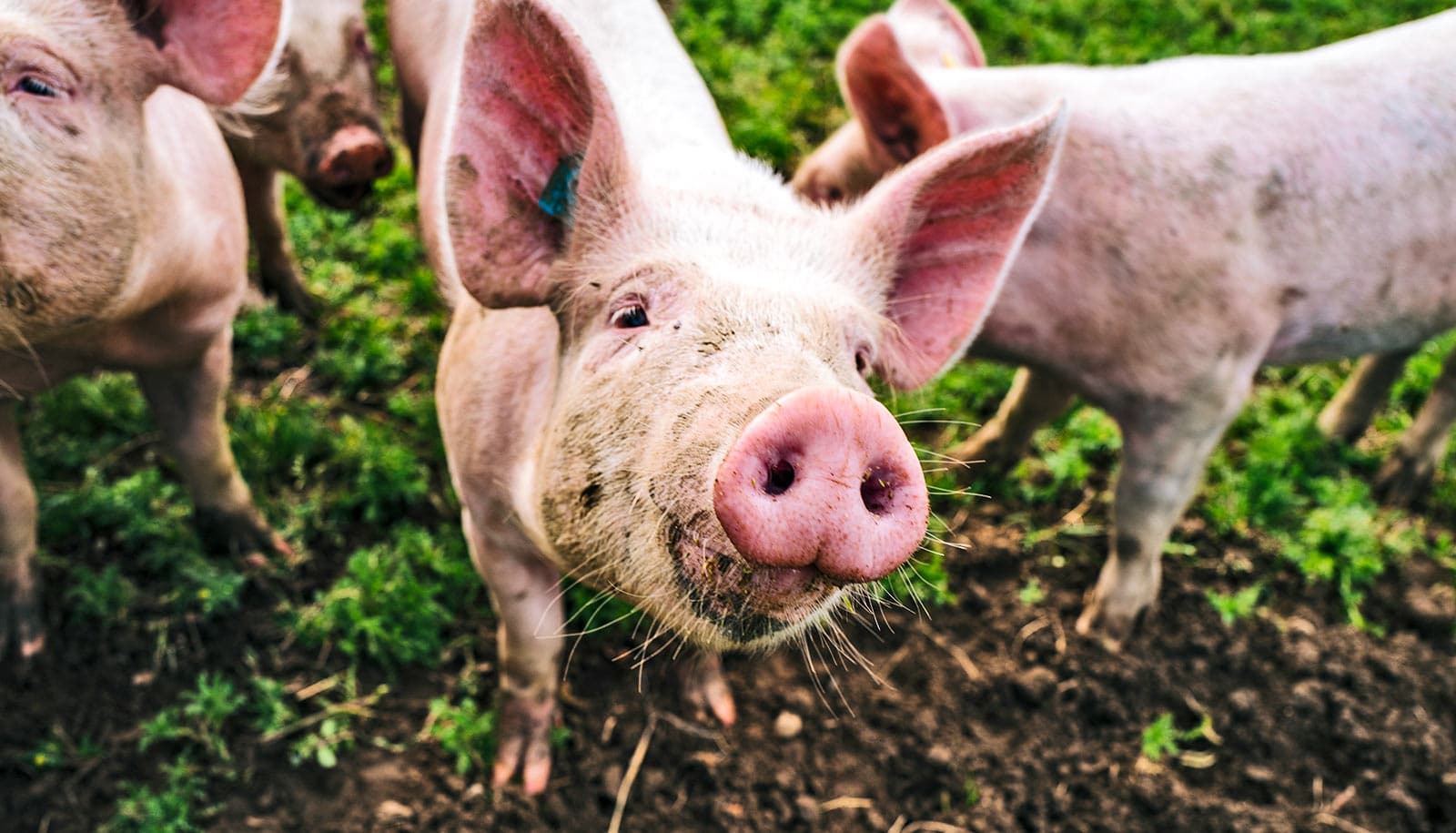People who do well on human empathy tests are also measurably better at decoding the emotional sounds of animals, according to a new study.
Other aspects, such as age and work related to animals, are also shown to play a crucial role.
Emotions are intense, short-term reactions triggered in response to certain internal or external stimuli. They’re characterized by a certain level of arousal (bodily activation) and valence (positive versus negative).
In the study, researchers recorded test animals in situations of various arousal and associated with positive or negative valence (e.g. expectation of food/food frustration).
The researchers then verified the emotional valence using behavioral indicators described in the research literature. They assessed emotional arousal based on the heart rates of domestic animals and on movement (a good behavioral indicator of arousal) in wild species.
In the big picture, the researchers were looking for traces of a so-called common emotional system among mammals, but the research also has specific applications related to animal welfare.
“Our results show that based on its sounds we, humans, can determine whether or not an animal is stressed (or excited), and whether it is expressing positive or negative emotions,” says behavioral biologist Elodie Briefer of the biology department at the University of Copenhagen.
“This applies across a number of different mammals. We can also see that our ability to interpret the sounds depends on several factors, such as age, close knowledge of animals and, not least, how empathetic we are towards other people.”
This marks the first time that so many different animal sounds were tested on humans, both in terms of arousal (i.e. stress/excitement) and valence (i.e. the charge of emotions positive vs negative).
For the study, which included the vocalizations, or calls, of six mammals, researchers recruited 1,024 people from 48 different countries. They played the sounds of goats, cattle, Asian wild horses (Przewalski’s horses), domesticated horses, pigs, and wild boars to participants along with the sounds of human gibberish from actors.
Interpreting animal sounds
On average, we humans, among animal species, can “guess” accurately more often than if you rolled a single dice and got random bids, the results show. For arousal, the correct answers amounted to 54.1% and for valence, that figure was 55.3%.
Participants were also asked to provide information about a range of factors including their age, gender, and level of education, just as they wrapped up their participation with an empathy test, and the researchers observed several interesting factors in relation to how well humans understand animal sounds.
The researchers studied several demographic characteristics that could affect the ability to interpret the animals’ sounds.
- Work with animals: The researchers observed a decisive factor in the group of test subjects that interact with animals in their work—also when it comes to other animals.
- Age: The results show a clear difference. People under 20 perform worse, 20-29-year-olds are best in the test, and the ability to decode animal sounds decreases steadily with age.
- Empathy: The researchers were most surprised that good results in an empathy test towards humans also yielded significantly better results with the animal sounds.
- Gender: On the other hand, there was no measurable difference between men and women, despite the popular assumption that women are more empathetic/emotionally intelligent.
- Parenthood: Neither was there a measurable difference between whether the subjects had children or not.
- Educational level (with or without a BA) did not make a noticeable difference.
- Domestication: A final aspect that influenced the results was about the animals rather than the subjects. Domesticated pigs and horses were easier to decode for subjects than their wild relatives.
Participants were presented with several questions, each containing two animal sounds from one particular animal, with either different arousal (but same valence), or different valence (but same arousal). They then had to guess if the sound was high or low arousal/positive or negative emotional charge (i.e. valence).
First and foremost, the results are significantly better when participants work with animals—even when the task is to listen to animals other than the ones that they are immediately familiar with. Thus, the results suggest that an intimate knowledge of animals generally promotes the understanding of animals’ emotional lives.
“This is good news for animal welfare. For example, farmers who want to ensure that their pigs are thriving are well-equipped to capture that,” says Briefer.
Age plays a role as well. Here, the study data shows that the better scores were found among the 20-29-year olds. On the other hand, the results demonstrate that participants under the age of twenty are the worst performers, and that the number of correct answers decreases with age.
Most surprising to the researchers was that their results showed a marked correlation between empathy for humans and animals.
“It was really surprising for me and very interesting that those who performed well in a recognized test to assess people’s empathic level—towards other people, mind you—were also significantly better at understanding the emotional lives of animals,” says Briefer.
Common ground
The researchers searched for traces of a common emotional system between mammals, which may have been preserved throughout evolutionary history. The study supports that thesis when it comes to recognizing arousal in particular. While results show large variation in how good people are in discerning whether the animals are experiencing positive or negative emotions, there is much less difference in how humans distinguish between high and low arousal among mammals.
According to Briefer, this may be because we in the mammalian family share common traits when it comes to how we express the intensity of our emotions (i.e. arousal), giving participants some innate ability to interpret arousal, and making results less dependent on acquired knowledge.
“Roughly speaking, higher-frequency sounds (in addition to other features) are often a sign of higher arousal, and lower-frequency sounds a sign of lower. If a subject uses the same standard to interpret animal sounds that he or she would use to understand a human, then it is often correct. We express arousal more similarly than valence because it is linked to stress pathways, which are evolutionarily well preserved in mammals,” explains Briefer.
“We could have used other tests that measure how a person relates to animals, but to make it simpler, we stuck to this particular empathy test, which was translated and validated for the eight languages in the study. It is a recognized test, but it measures empathy towards other people. Nevertheless, we see a clear correlation with the ability to interpret animal sounds,” she says.
“Today, animal welfare is defined by the emotional life of animals. Therefore, new knowledge provided by this study is important for both basic and applied research. On the one hand, it increases the understanding of animal emotions, and it opens opportunities to improve that understanding,” says Briefer.
Why it matters
According to Briefer, the knowledge contributed by the study shows the path to concrete ways to work on improving animal welfare through an understanding of their emotional lives.
“For example, the development of an app where AI supports those who work with animals offers promising perspectives. But it is also important to note that there is nothing to prevent someone from beginning to improve their own skills now if they interact with animals on a daily basis,” Briefer points out.
“When students try the test in class, they obtain an average of 50% of correct answers on the first try. After we talk about the sounds and knowledge that we have about animal vocalizations, they improve. On their second attempts, they typically get above 70% correct. It is natural to explore this potential in future studies. I definitely think that it’s possible to practice and improve this ability for the vast majority of people,” says Briefer.
The research appears in Royal Society Open Science.
Source: University of Copenhagen



